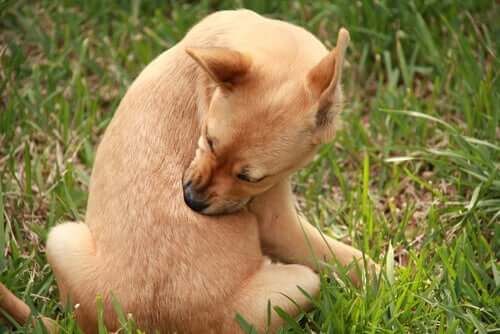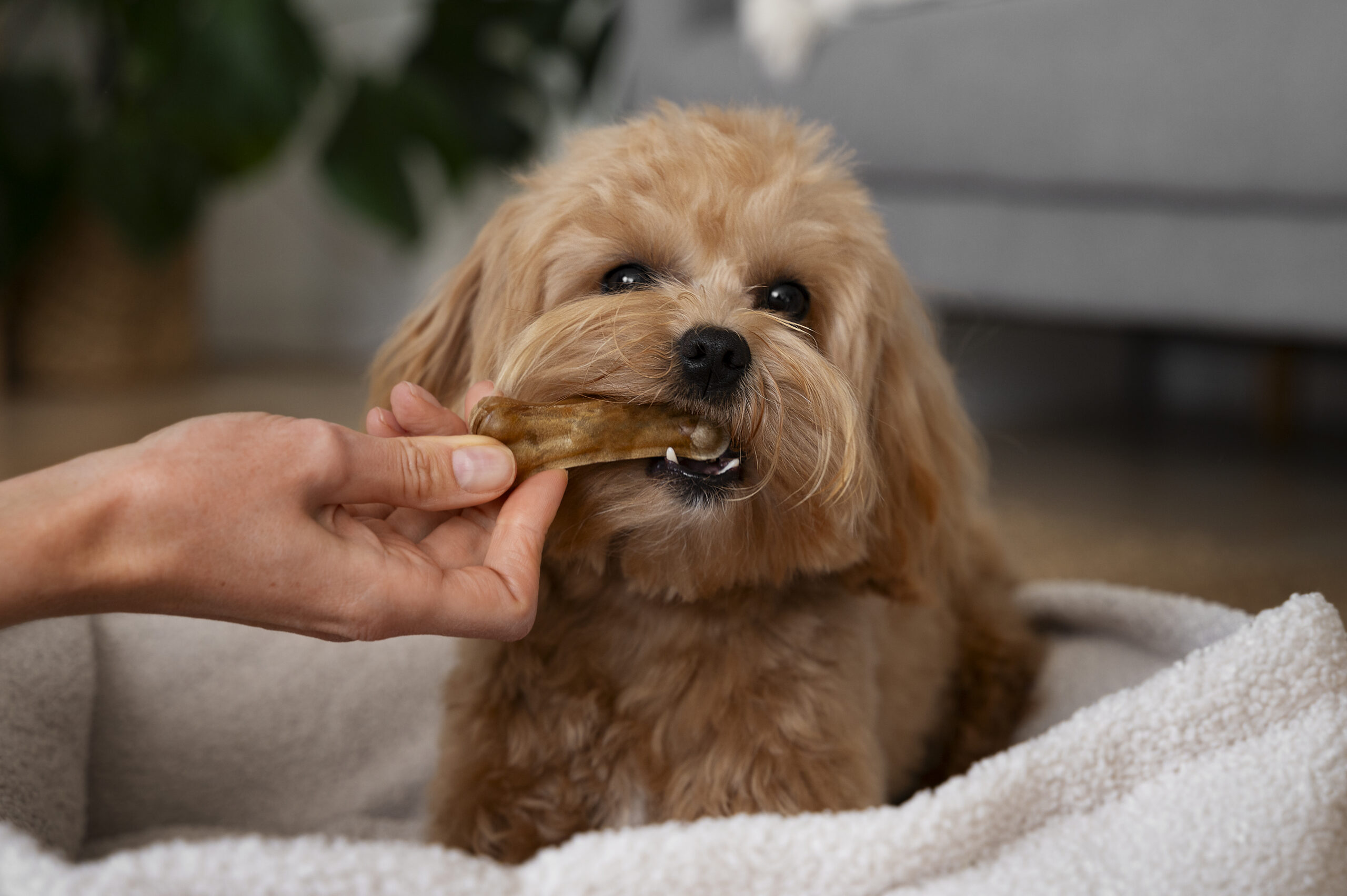Every pet parent who prioritizes their dog’s health must know common dog skin problems. Here you will find details about their signs, causes, and treatments.
Common Dog Skin Problems
Dog skin problems are one of the most common reasons to visit veterinarians. As we know skin is a large organ in dogs. Skin plays an important role in the regulation of various body functions. Healthy skin is essential for your pup’s well-being. Constant scratching, itching, or pawing can irritate both partners (dog and owners). Regular monitoring, clean fur, care routine, and anti-allergic foods can help save your dog from various skin conditions.
Some common skin problems in dogs are listed including their causes, symptoms, and treatments.
List of Dog Skin Diseases
1- Dog Skin Allergies
One of the most reasonable reasons to visit a vet is dog skin issues. Environmental factors like pollen or food can affect the dog’s skin and cause severe itching or scratching. When your dog is exposed to allergens, a chemical called histamine is released in the dog’s body, triggering itching.
Symptoms of Allergies in Dog:
- Itching on affected skin
- Biting or licking the skin
- Bad odor in skin
- Discharge from eyes
- Redness
- Hair Loss
Causes of Dog Allergies:
- Pollen, dust, mold, or certain trees
- Fleas are the major cause of allergies in dogs
- Foods that contain allergic ingredients
Treatment
- Use anti-allergic drugs like corticosteroids
- Add fish oil and omega-3 fatty acid supplements to your dog’s diet
- Make your pet’s bed and room clean
- Use air purifiers that reduce pollen or dust particles
- Use clean and hygienic grooming tools
2- Parasites
Dog parasites are common skin illnesses that can cause many health problems if not removed properly. Removal of parasites is important for your dog’s overall health; otherwise, these parasites can damage their hearts, lungs, and intestines. There are two types of parasites in dogs: external and internal parasites.
Internal Parasites are:
- Hookworms infect their intestine
- Tapeworms Affect the growth of developing pups
- Roundworms cause gastrointestinal disorder
- Heartworms are life-threatening parasites that affect the heart and lungs
- Whipworms can damage the colon and intestine functioning
- Giardia is the reason for vomiting and dehydration in dogs
External Parasites are:
- Fleas
- Ticks
- Mites
Symptoms of Parasites in Dogs:
- Fatigue
- Weight Loss
- Increase in appetite but not increase in weight
- Rubbing the rear end with the floor to relieve itchiness
- Shrinkage of the belly especially in pups
- Blood in feces
Causes of Parasites:
- Ingested contaminated food and water
- Infected Mosquito bite
- Expose to dog feces affected by parasites
- Licking the contaminated surfaces
Treatment
Treatment of dog parasites depends on the type of parasites and the severity of infections. Most treatments are oral medicines given to dogs that kill the parasites. Some parasites are removed from a dog’s body by proper procedure. Consult a veterinarian if your dog is affected by parasites.
3- Bacterial Skin Infections

Bacterial infections occur when unknown bacteria enter the body through skin wounds. These infections also happen when skin bacteria grow more than the normal size on the skin surface. These bacteria not only affect their skin but also their respiratory and digestive systems.
Common bacterial infections in dogs:
- Staph infection
- Bacterial pneumonia
- Campylobacter Infection
- Helicobacter Infection
- Salmonella infections
Symptoms of Bacterial Skin Infections are:
- Redness
- Itching
- Soreness in a specific area
- Cough and Fever
Causes of Bacterial Infections are:
- Improper Diet
- Week immune system
- Allergies
Treatment
- Antibiotic shampoos and ointments
- Oral antibiotics such as cephalexin, erythromycin, or clindamycin
- Antibiotic injections
- Keep your dog’s skin clean and dry by regular grooming
4- Dog Hot Spots
Hot spots also called moist dermatitis occur due to underlying skin allergies. The affected skin area becomes red, hot, and inflammable often dogs feel pain while touched. The hot spot develops over a night and you can see blade skin without hairs.
Symptoms of Hot Spots:
- Severe Itching
- Redness
- Feel pain on touch
- Hair Loss
- Skin feels hot
Causes of Hot Spots in Dogs:
- Food Allergies
- Insect bites
- Continuously itching, licking, or scratching
- Poor grooming
Treatment
Clean the hot spot area with gently warm water and cut hairs around the hot spots. Use an antiseptic solution for cleaning purposes. Stop your dogs or pups from excessive scratching, licking, and itching.
5- Yeast Infections

Yeast skin infection also called Malassezia dermatitis is caused by the overgrowth of yeast on a dog’s skin. Acute yeast infection causes hyperpigmentation and darken the skin. This infection occurs in the dog’s ear, skin folds, and between paw’s fingers.
Symptoms of Yeast Infections in Dogs:
- Skin Irritation
- Scaly Skin
- Musky odor
- Skin becomes thickened also known as elephant skin
- Head Shaking
- Bald Patches
- Loss of Hearing
- Excessive Licking and chewing the affected areas
Treatment
- Use antifungal creams or ointments on affected skin
- Anti-inflammatory oral medication helps to reduce inflammation
- Reduce yeast growth by using anti-fungal shampoo
- Clean their ears with medicated solutions
- Prevent the moist environment that causes allergies
6- Ringworm

There is a misconception about this dog skin problem. Because of its name, it looks like a worm disease but ringworm occurs due to fungus, and the ring word comes from the red circular patches on the skin. Ringworm mainly forms on a dog’s head, ears, and paws. This zoonotic or contagious disease spreads from dog to dog, especially in kennels.
Symptoms of Ringworm:
- Circular red patches
- Hair loss
- Skin becomes scaly
- Itchiness but not severe
- Inflammation
Treatment
- Clean the Area with a dilute anti-fungal solution
- Use oral anti-fungal medication
- Keep the affected dog separate from healthy dogs
7- Hair Loss
In Hair loss or Alopecia, hair sheds more than usual. If you notice hair in your home rather than shedding season consult a vet because it can be alopecia.
Causes of Hair Loss:
- Bacterial Infections
- Fungal Infections
- Food Allergy
- Drug Reaction
- Skin Diseases
- External Parasites
- Hypothyroidism
- Cushing’s disease
Treatment
Asses your vet who can monitor the issue and recommend treatment accordingly.
8- Skin Cancer

Skin cancer is the most common type of cancer in dogs. In this condition, bumps, lumps, and hair loss appear on the skin. If you notice any unhealing wounds or discoloration on the skin, consult your vet immediately, as it is a life-threatening disease.
Symptoms of Skin Cancer:
- Irritation
- Ulceration on Skin
- Skin becomes dry
- Blood on skin
Causes of Skin Cancer:
- Genetic
- Hormones Imbalance
- Virus
- Sun Exposure
- Various Chemicals
Treatment
- Chemotherapy
- Remove tumor by surgery
- Immunotherapy
- Severe Pain
9- Dry Skin
Dry skin is a common problem for dogs and can occur for various reasons. When the pet parents bathe their dogs without any need, the natural oil in their coats is stripped out and causes skin dryness.
Symptoms:
- Allergies
- Parasites
- Infections
- Excessive bathing
- Human soap
- Poor Diet
Causes:
- Dandruff
- Flaky skin
- Pimples
- Scaly Skin
- Hair loss
- Allergic ingredients in food such as eggs, chicken, beef, corn, soy
Treatment
- Avoid allergic food
- Stop them from excessive itching or scratching
- Use dog skin moisturizers for dry skin
- Bath your dog with dog-specified shampoo and soap
10- Autoimmune Diseases
In autoimmune disease, the dog’s immune system directly attacks the skin, causing blistering, ulceration, and hair loss.
Symptoms of Autoimmune Disease:
- Crusting lesions
- Hair loss
Causes of Autoimmune Disease:
- Week Immune system
- Inheritance
- Drug Reactions
Treatment
For proper treatment take your dog to a pet specialist who will examine the dog and find the reason for this disease. Follow the vet-given prescription.
FAQs
How to treat dog hot spots?
Gently clean the hot spot area with warm water and trim the hairs surrounding the spots. Use an antiseptic solution for cleaning. Prevent your dogs or puppies from excessive scratching, licking, and itching.
How to bathe a dog with itchy skin?
Don’t use shampoo or ointment on itchy skin before consulting your vet. Follow the suggestions given by a vet. It is necessary to monitor the underlying condition of the skin afterward. Bathing dogs with itchy skin can be painful. So, always use vet-approved dog shampoo after bathing, use a towel gently to dry the skin, and apply anti-itching cream or moisturizer for dry skin. Avoid using a hair dryer, which can lead to increased skin dryness.

